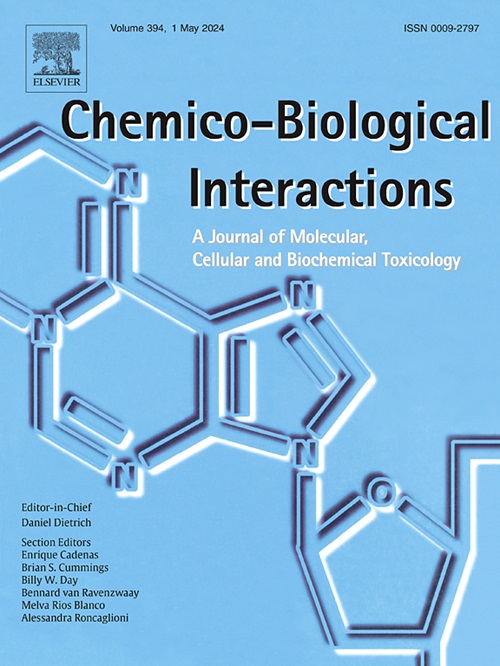Subtype-selective effect and molecular regulation of celastrol and triptolide at human nicotinic acetylcholine receptors
IF 4.7
2区 医学
Q1 BIOCHEMISTRY & MOLECULAR BIOLOGY
引用次数: 0
Abstract
Celastrol and triptolide, bioactive compounds isolated from Tripterygium wilfordii Hook F, have demonstrated significant pharmacological effects across various biological pathways, making them subjects of extensive research for potential therapeutic applications. Celastrol and triptolide are known to have therapeutic use in neurodegenerative diseases including Alzheimer's disease and Parkinson's disease through neuroprotective action. Nicotinic acetylcholine receptors (nAChRs) are a subtype of cholinergic receptors and are ligand-gated ion channels that play an essential role in regulating synaptic transmission in the central nervous system. The results of this study indicate that celastrol and triptolide inhibit nAChR subtypes in a subtype-specific manner. This inhibitory effect was shown to be reversible, concentration-dependent, and noncompetitive. Mutation experiments were then performed to identify mutations in the binding site of nAChR determined by molecular docking studies and prioritize them based on binding energy, and it was found that triptolide had no inhibitory effect in double mutants of nAChR. These findings confirm that celastrol and triptolide selectively and effectively inhibit α3β2 and α3β4 nAChRs among various nAChR subtypes, and that celastrol and triptolide interact with a specific region of α3β4 nAChRs, which play a key role in the autonomic nervous system, without inhibiting the activity of α7 and α4β2, which act in neurodegenerative diseases.

雷公藤红素和雷公藤甲素对人烟碱乙酰胆碱受体的亚型选择效应和分子调控。
雷公藤红素(Celastrol)和雷公藤甲素(triptolide)是从雷公藤中分离出来的生物活性化合物,已在多种生物途径中显示出显著的药理作用,使其成为潜在治疗应用的广泛研究对象。众所周知,雷公藤红素和雷公藤甲素通过神经保护作用治疗神经退行性疾病,包括阿尔茨海默病和帕金森病。烟碱乙酰胆碱受体(Nicotinic acetylcholine receptor, nAChRs)是胆碱能受体的一个亚型,是一种配体门控离子通道,在中枢神经系统突触传递调控中起重要作用。本研究结果表明,雷公藤红素和雷公藤甲素以特定亚型的方式抑制nAChR亚型。这种抑制作用是可逆的、浓度依赖性的、非竞争性的。然后进行突变实验,对分子对接研究确定的nAChR结合位点突变进行鉴定,并根据结合能对其进行排序,发现雷公藤甲素对nAChR双突变体无抑制作用。这些发现证实了雷公藤红素和雷公藤甲素选择性有效地抑制不同nAChR亚型中的α3β2和α3β4 nAChR,并且雷公藤红素和雷公藤甲素与自主神经系统中起关键作用的α3β4 nAChR的特定区域相互作用,而不抑制在神经退行性疾病中起作用的α7和α4β2的活性。
本文章由计算机程序翻译,如有差异,请以英文原文为准。
求助全文
约1分钟内获得全文
求助全文
来源期刊
CiteScore
7.70
自引率
3.90%
发文量
410
审稿时长
36 days
期刊介绍:
Chemico-Biological Interactions publishes research reports and review articles that examine the molecular, cellular, and/or biochemical basis of toxicologically relevant outcomes. Special emphasis is placed on toxicological mechanisms associated with interactions between chemicals and biological systems. Outcomes may include all traditional endpoints caused by synthetic or naturally occurring chemicals, both in vivo and in vitro. Endpoints of interest include, but are not limited to carcinogenesis, mutagenesis, respiratory toxicology, neurotoxicology, reproductive and developmental toxicology, and immunotoxicology.

 求助内容:
求助内容: 应助结果提醒方式:
应助结果提醒方式:


